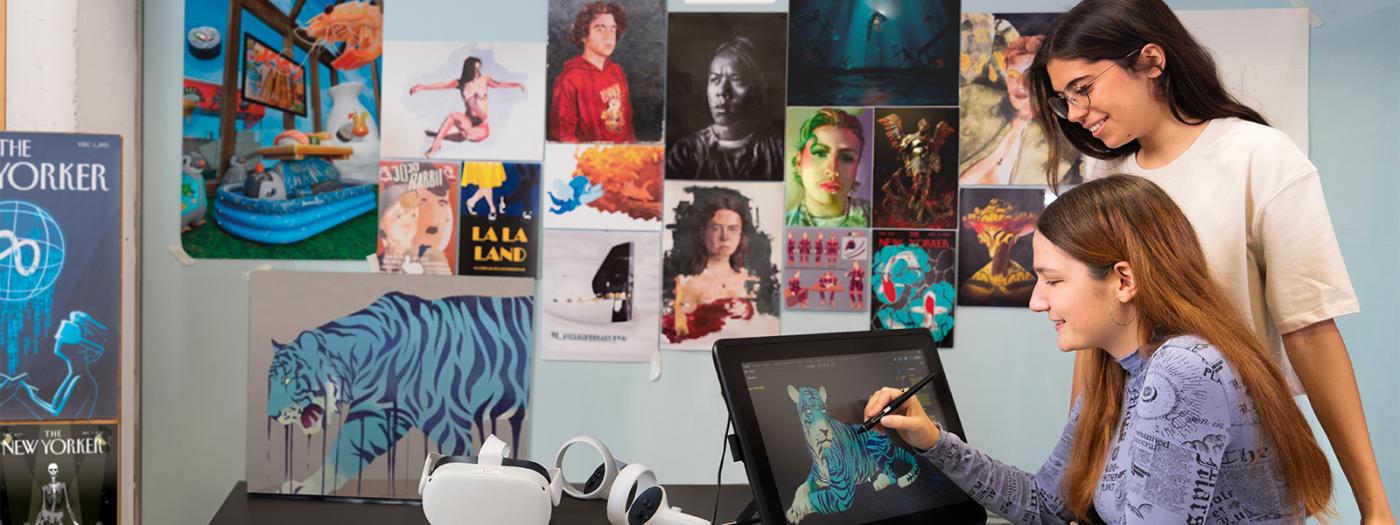Titular Professors
Learning outcomes of this subject are:
RA85: The student will be able to generate ideas and concepts through drawing
RA86: The student will be able to develop narrative ideas through storyboarding from a given script
-1. Introduction: the storyboard and the areas in which we will work.
-2. Primers exercises
Human figure
Perspective
Plans/points of view/composition
-3. Storyboard to the comic
-4. storyboard tv
-5. Storyboard cinema and animation
-6 Final Project
At the beginning of the subject we will work on drawing (human figure, understanding of space,
perspective) and some of the basic narrative resources applied to cinema, TV, comics and animation
(shots, points of view, composition) through several practical exercises.
We will dedicate the following sessions to understanding the terminology and codes used in
storyboarding, as well as becoming familiar with the visual language of storyboarding in various of its
areas. Throughout the course, we will see the differences between the different types of storyboards
depending on the field, as well as the use given to each one.
Students will acquire the agility and skills necessary to draw storyboards, going through the
understanding of drawing, the synthesis of forms, narration and the language of the storyboard in each
of its areas.
To understand the language of storyboarding, we will see examples and learn about the work of
professional artists, and we will work from audiovisual projects to put into practice what we learned in
the first sessions. Students will also create storyboards from their own scripts.
Classes will be carried out with graphic and audiovisual support that will allow the student to become
familiar with the storyboard language. Attendance at classes is essential to understand the medium, as
well as to perform the first practical exercises and discuss them in class. The student will be evaluated
taking into account their general interest in the subject, the exercises done in class and the final project.
Continuous assessment objectives:
The first exercises will allow us to monitor the students and determine if they are acquiring the basic
knowledge to understand the language of the medium and subsequently create their own storyboards.
They will also serve to put drawing into practice, understand narrative language and develop the
necessary agility when solving a script.
It also allows us to distribute the percentage of points between the first exercises and the final project.
Evaluation percentages:
10% General interest in the subject and work done in class/attendance
40% Practical exercises
50% Final project
- Submissions must comply with the established rules and deadlines.
- For averaging, the minimum mark for each of the submissions must be 4.
- Students who do not attend 70% of the classes in a subject will lose the right to final assessment and
recovery. Therefore, they will have to repeat the subject.
- Students who hand in less than 50% of the total assessed work of the course (including exams) will not
be entitled to the extraordinary exam in July.
right to the extraordinary exam in July.
- In case the student does not pass the ordinary exam, he/she will have the right to an Extraordinary
Examination in July. in July. Students must hand in those practicals with a grade lower than 4.
- A student who does not do a practical or assessment and it is found that another student has done it for
him/her, incurs in
The student will be considered a Very Serious Foul with Premeditation. The student will receive a 0 in the
work and an NP in the subject. In addition, an academic record will be opened for the two students
involved.
- The evaluation board will apply the regulations by assessing the student's progress and academic
performance.
See the regulations for copies on the campus website:
The categorisation of the assessment activities of the subject is as follows:
- Partial practicals: highly significant.
- Evaluation test: highly significant.
Students who, in the first academic year, in the ordinary and extraordinary calls, do not manage to
pass 20 ECTS of the enrolled subjects that have not been recognised or transferred, will be withdrawn
from the Centre.
Throughout the sessions, students will be given specific bilibiographical references.
In this course, the use of A.I. It is allowed as long as it is used as a support or study tool, but it can never form part of the
final art of the evaluation exercises.
